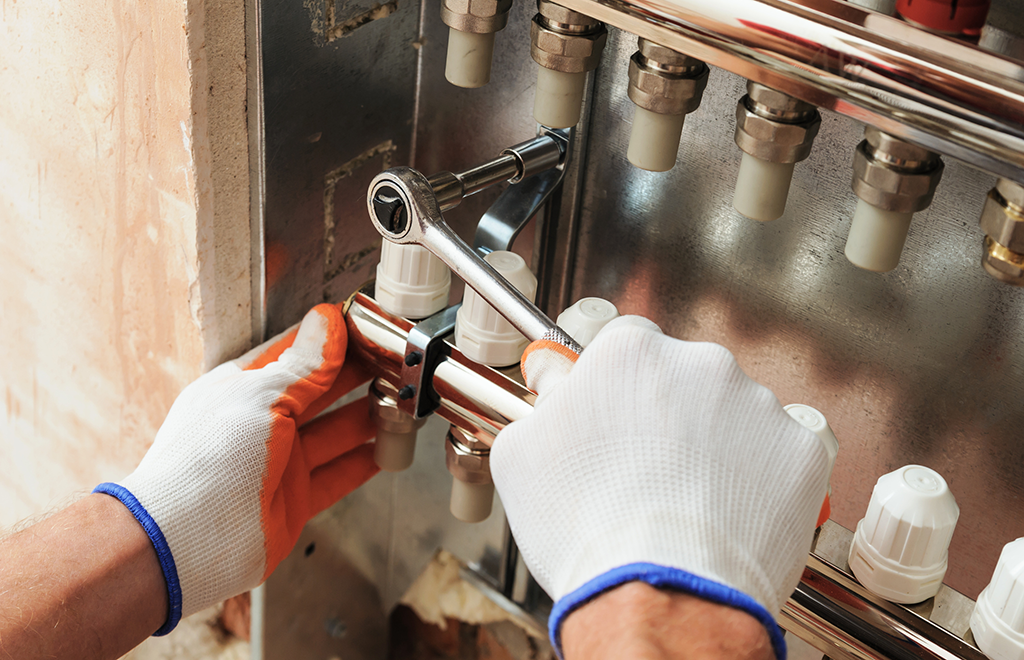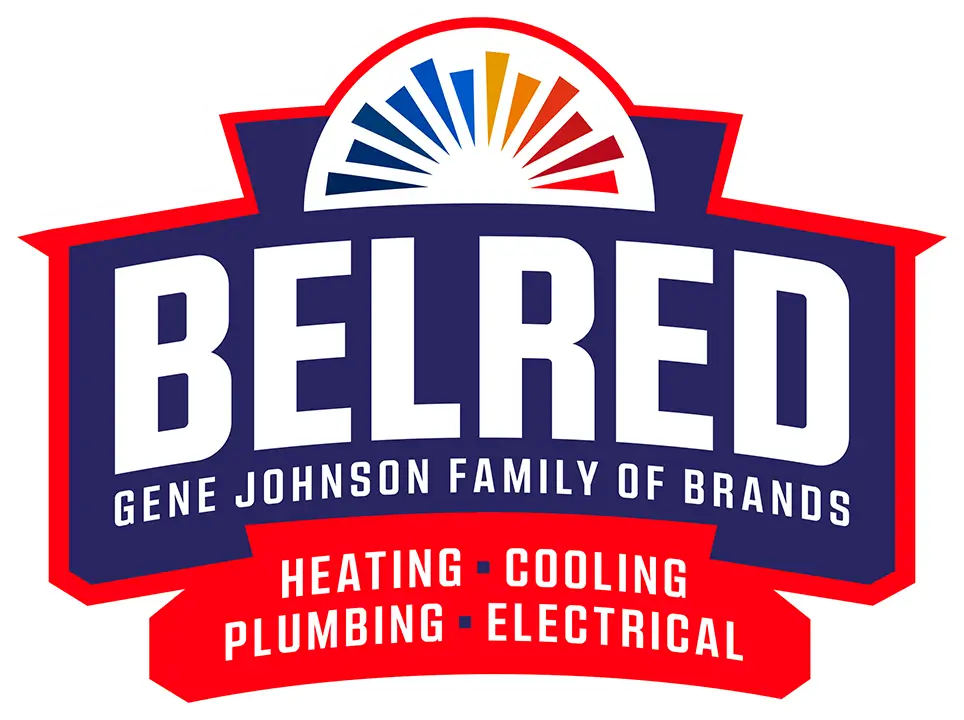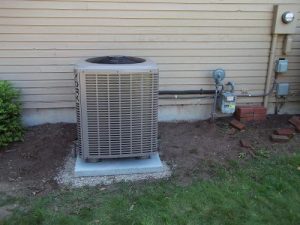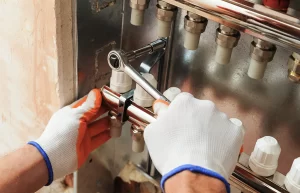Has your furnace been acting a bit off lately? Erratic cycling, weak airflow, or just refusing to start up altogether? Before you panic about major heating system woes, there’s one tiny-but-mighty component you might want to investigate – the furnace capacitor.
These little cylinder-shaped pieces may seem insignificant, but they give your furnace motors the electrical boost required for reliable operation. When capacitors start failing, they can throw a whole host of confusing symptoms your way. From strange noises and overheating issues to no-heat situations, a bad capacitor will definitely let you know it’s on its way out.
In this guide, we’ll cover everything you need to know about furnace capacitors – how they work, why they fail, identifying symptoms, safe testing methods, and when replacement is your best option. Don’t let a simple capacitor problem turn into a winter homeowner’s nightmare! This is something to do during the furnace prep for the winter.

Understanding Furnace Capacitors
Before we dive into the signs of a failed capacitor and troubleshooting steps, let’s make sure we’re all on the same page about what these tiny cylinder-shaped components actually do for your furnace system. While not the most glamorous part, capacitors play a crucial behind-the-scenes role in your home’s heating.
What is a Furnace Capacitor?
A furnace capacitor is essentially a little backup battery designed to give your system’s motors a temporary boost of power during startup. This extra electrical charge helps supply enough torque to get those big blower fans and other components smoothly up and running.
Most furnaces use two capacitors – one for the blower motor and another for the condenser fan motor if you have a central air conditioning system. They store electrical charges briefly before releasing them in a abrupt jolt to kick the motors into action. Think of it like giving your car a quick push to get it started!
How Capacitors Enhance Furnace Performance
Without properly working capacitors constantly resupplying those power boosts, your furnace’s motors would have a much harder time operating reliably in several key areas:
Smooth Startups
Those kicks of power from the capacitors allow furnace motors to easily overcome initial inertia and drag during startup. Without them, you’d experience much harder/noisier startups as the motors struggle.
Consistent Airflow
Once the motors are up and running, capacitors help maintain steady, consistent airflow by ensuring the motors don’t struggle with friction from dust/debris buildup over time.
Lower Electricity Usage
Capacitors reduce the overall electricity demands of motors during operation cycles compared to if they had to start and run from scratch each time.
Extending Motor Life
By giving an assist at startup and reducing electrical strain, capacitors help prevent premature motor burnout and failures.
So in many ways, capacitors are a humble little enabler that helps keep your entire forced-air heating (and cooling) system operating smoothly and efficiently all season long. When they start showing signs of fatigue, you’ll immediately notice a decline in that overall furnace performance.
Common Signs of Capacitor Failure
As furnace capacitors start wearing out and failing, they’ll give off some hard-to-miss clues that something isn’t quite right with your heating system’s performance. It’s important to stay alert for these red flags, as a capacitor issue left unchecked can potentially lead to bigger (and pricier) breakdowns down the line.
Symptoms of a Failing Capacitor
Clicking/Buzzing Noises During Startup
Hearing a loud clicking or buzzing sound as your furnace kicks on is one of the most common indicators that the capacitor is struggling to fully engage the motor. It’s basically throwing a temper tantrum trying to get that blower going.
Difficulty Starting Up
If you have to restart your furnace multiple times before it’ll actually fire up and start blowing air, there’s a good chance it’s due to a capacitor backfiring and failing to give that initial motor jolt.
Overheating Components
Since capacitors help reduce power demands on furnace motors, a faulty one can cause excessive heat buildup around the blower motor compartment as it overworks.
Performance Issues Indicating Capacitor Problems
Erratic Operating Cycles
A classic sign of capacitor issues is your furnace randomly turning on and off repeatedly in quick succession instead of running full operating cycles. It can’t quite “charge up” properly.
Weak/Inconsistent Airflow
As capacitors degrade, they struggle to keep furnace motors running strong. This leads to poor and inconsistent heated airflow out of your vents – one room toasty, the others chilly.
Frequent Overheating & Shutdowns
When motors can’t get enough capacitor assistance, they’re forced to work much harder. This excessive strain makes the furnace prone to overheating issues that trigger emergency shutdowns.
While annoying, most of these issues caused by failing capacitors are fortunately simple repairs compared to completely replacing furnace motors or control boards. But getting on it quickly is still key!
Diagnosing a Faulty Furnace Capacitor
If you’ve noticed any of those telltale signs we just covered, it’s time to put on your HVAC inspection hat and do some capacitor troubleshooting. Before you go poking around your furnace system though, there are some essential safety considerations to keep in mind.
Safety Precautions Before Inspection
Working around electrical components like capacitors does carry some risk if you don’t take the proper precautions:
- Disconnect all power to the furnace – both gas and electric – and give it time to fully power down before inspecting.
- Never try inspecting or handling capacitors while the furnace is operational, even if just briefly cycling on. The electrical charges can be hazardous.
- Use rubber-insulated gloves and tools when working around capacitors to prevent shocks. They can maintain residual charges for a while.
- If you’re not 100% confident in working with electrical equipment, it’s best to call in an experienced HVAC professional rather than risk injury.
Step-by-Step Guide to Inspecting the Capacitor
Assuming all safety measures are taken, here’s a quick walkthrough for actually diagnosing that potentially faulty capacitor:
- Locate the capacitor(s) – there may be separate ones for the blower and condenser fan motors. They’re usually near the top of the furnace interior.
- Inspect the capacitor casing for any signs of bulging, leaking, or rupture on its topside. These are all indicators it needs replacement.
- Use a multimeter set to the capacitance setting to test the microfarad (µF) rating matches the figures printed on the side of the capacitor.
- Swap out the multimeter’s leads while noting the µF reading. It should remain relatively constant in both polarities if operating correctly.
- Look for any burn or heat damage on the capacitor’s wiring that could cause internal short-circuiting.
If the multimeter readings are off, the casing is damaged, or you see signs of overheating, those all point to your furnace capacitor being faulty and in need of replacement. Be sure to grab the µF rating off the old capacitor so you can purchase the proper replacement.
When to Replace a Furnace Capacitor
Through your step-by-step inspection, you’ve identified some likely issues with your furnace’s current capacitor(s). But how do you determine if replacement is absolutely necessary versus trying to limp it along for another season? There are a few key factors to look at.
Evaluating Capacitor Condition
While visual signs like a bulging capacitor case or burn marks are obvious failure indicators, the multimeter test really seals the deal on whether it’s time for a replacement:
- If microfarad readings are more than 20% higher or lower than specified, the capacitor is out of its operating range.
- Inconsistent readings between multimeter lead polarities also signal an internal short/open circuit.
- Any signs of corrosion, moisture intrusion, or dried electrolyte residue around the cap’s seal point to impending failure.
Essentially, if the test shows electrical properties straying from the rated specs in any way, that’s a telling sign the capacitor is reaching the end of its service life. Pushing it further could lead to more furnace component damage.
Professional Replacement vs DIY Considerations
For HVAC pros, swapping out a faulty furnace capacitor is a pretty straightforward repair. But is it something the average homeowner can realistically take on themselves?
The Pros of DIY Capacitor Replacement:
- Heating/cooling capacitors are relatively inexpensive parts, often $10-25.
- It’s generally an easy fix for those comfortable with basic electrical/HVAC work.
- Instructional videos and tutorials are widely available to guide the process.
The Cons:
- You must properly discharge residual electrical charge and handle with care.
- Improperly installed and sized capacitors can rapidly degrade and fail again.
- Working inside a furnace cabinet presents some safety risks if inexperienced.
Weighing Professional vs DIY really comes down to your personal confidence level in tackling this type of electrical repair work. While straightforward for some, others may want the safety and peace of mind that comes with an HVAC tech handling it. Either way, once you’ve confirmed a bad capacitor, replacement should be a priority to restore efficient furnace operation.
Cost Considerations for Replacing a Broken Capacitor
For such a small and seemingly insignificant component, furnace capacitors can catch homeowners off guard with their replacement costs. While the capacitor itself is an inexpensive part, there are a few factors that can make the overall repair bill higher than you’d expect.
The Capacitor Part Costs
Replacement capacitors rated for your furnace’s specifications are relatively low-cost. Higher-end units may use slightly pricier capacitors, but the part alone is generally very affordable.
Labor Charges
This is where those costs start increasing. Since replacing a capacitor requires working inside the electrical areas of your furnace, most HVAC companies will bill their standard service call fees. Be prepared for minimum labor charges.
Code/Permit Considerations
Depending on your area’s regulations, having this type of electrical work performed may require pulling permits and having the job inspected for code compliance. Those additional permit costs can drive up the total.
Potential Extra Parts/Repairs
In some cases, a bad capacitor might have already caused collateral damage to other furnace components from the excess electrical strain. Items like contactors, relays, or even motors may require extra repairs or replacement parts.
Why Replacement is Still Better Than Repairs
At first glance, a capacitor replacement can seem excessive for such a simple part. However, those costs are still much lower than what you’d face from running your furnace to complete failure, which could require repairing or replacing failed blower motors, circuit boards, or even the entire furnace system – exponentially higher expenses.
So while not necessarily cheap, replacing a faulty furnace capacitor proactively is still vastly more economical than waiting for it to potentially destroy other expensive furnace components down the road. The smaller cost upfront prevents tremendously bigger costs and headaches later on.
Furnace Capacitor Lifespan
With capacitors playing such a pivotal role in your furnace’s operation, you’d think these little components would be built for longevity. Unfortunately, that’s simply not the case – capacitors have one of the shorter lifespans of any part in your heating system.
Normal Replacement Cycle
Most HVAC professionals recommend budgeting to replace your furnace’s capacitor(s) every 5-7 years as part of regular maintenance. While some may make it a bit longer, that half-decade mark tends to be when failure rates increase exponentially.
Why Such a Short Lifespan?
The reasons capacitors burn out faster than other furnace parts come down to their fundamental design and operating conditions:
Constant Electrical Cycling
With every furnace cycle, capacitors charge up and release powerful jolts of electricity to get motors spinning. This constant cycling of electrical loads gradually degrades the capacitor’s internals over time.
Heat Exposure
Capacitors are installed in very close proximity to furnace components that generate lots of heat like motors and burners. Prolonged exposure causes accelerated drying out of capacitor electrolytes.
Environmental Factors
Unless properly sealed, capacitors can fall victim to moisture accumulation which facilitates internal corrosion and breakdown of dielectric materials.
While definitely not premature, that 5-7 year expected lifespan may feel rather short compared to other HVAC components. But it’s just par for the course with this particular part’s design limitations.
The good news? Capacitor replacements are a relatively simple and affordable repair when you compare the cost of riding one to complete failure. Keeping an eye out for signs of trouble and replacing proactively ultimately saves you from much bigger furnace repair headaches.
So don’t get caught needing serious furnace work just because you skipped a quick capacitor swap! Let the professionals take care of this maintenance routine so you’re never left out in the cold.
Maximizing the Lifespan of Your Furnace Capacitor
Even though furnace capacitors are relatively inexpensive components with limited lifespans, that doesn’t mean you should settle for the bare minimum service life. With just a little extra preventative care, you can help maximize those capacitors’ usable years and potentially delay replacements.
The key areas to focus your longevity efforts? Minimizing environmental stresses and keeping those capacitors operating as clean and cool as possible. Here are some useful tips:
Keep It Clean
Over time, capacitors can accumulate dust, dirt, and other particle buildup on their casings. This grime acts as insulation, trapping excess heat. Make an effort to regularly clean off any debris during routine furnace maintenance.
Improve Air Flow
Inadequate airflow around and through the furnace interior can restrict heat dissipation and cause hot pockets that bake capacitor components. Ensure all air filters are fresh and the blower motor/wheel are clear of obstructions.
Check Those Connections
Loose or corroded wiring connections can put excess electrical strain on capacitors during operation cycles. Tighten all capacitor wiring terminations annually and clean any corrosion.
Consider a Hard Start Kit
These handy devices help counter the initial inrush of electrical demand during motor startups so capacitors don’t have to work as hard. Hard start kits ease stress on capacitors prolonging their life.
Upgrade to Higher Temp Capacitors
For chronically hot furnace environments, you can replace standard capacitors with higher-temperature rated ones able to better withstand the hotter conditions.
The bottom line – minimizing electrical, heat and environmental stresses pays big dividends in extending your furnace capacitors’ lifespans. A little preventative care goes a long way!
And of course, when the time does come for replacements, you can count on the experts at BelRed to make the repair process quick and headache-free. Don’t let a bad capacitor leave you out in the cold!
Ensuring Furnace Reliability: The Crucial Role of Capacitors in Home Heating
While tiny and easily overlooked, furnace capacitors play an outsized role in keeping your home’s heating system chugging along all winter. When these hard-working components start failing, it’s up to you as the homeowner to quickly catch the warning signs before bigger heating nightmares develop.
From erratic cycling and weak airflow to tripped breakers and difficulty starting up entirely, a bad capacitor can really throw your furnace out of whack in strange ways. Catching the issue early allows for a simple, affordable fix to restore reliable operation.
Don’t let furnace capacitor problems catch you by surprise and leave you shivering. If you notice any suspicious noises or performance issues, count on the HVAC experts at BelRed Heating, Cooling, Plumbing & Electrical to get it properly diagnosed and serviced. Our team has the training and experience to ensure your heating system keeps delivering peak comfort all season long.
Contact us today at (855) 345-6161 to schedule furnace maintenance or capacitor replacement performed to BelRed’s signature “Gold Standard” of service excellence! Keeping that tiny capacitor in peak condition is a small investment for year-round heating peace of mind.







